I'm very new in deep learning, and I'm targeting to use GAN (Generative Adversarial Network) to recognize emotional speech. I've only known images being as inputs to most deep learning algorithms, such as GAN. but I'm curious as to how audio data can be an input into it, besides of using images of the spectrograms as the input. also, i'd appreciate it if you can explain it in laymen terms.
3 Answers
Audio data can be be represented in form of numpy arrays but before moving to that you must understand what audio really is. If you give a thought on what an audio looks like, it is nothing but a wave like format of data, where the amplitude of audio change with respect to time.
Assuming that our audio is represented in time domain, we can extract the values at every half-second(arbitrary). This is called sampling rate. Converting the data into frequency domain can reduce the amount of computation requires as the sampling rate is less.
Now, let's load the data. We'll use a library called librosa , which can be installed using pip.
data, sampling_rate = librosa.load('audio.wav')
Now, you have both the data and the sampling rate. We can plot the waveform now.
librosa.display.waveplot(data, sr=sampling_rate)
Now, you have the audio data in form of numpy array. You can now study the features of the data and extract the ones you find interesting to train your models.
- 583
- 4
- 18
Further to Ayush’s discussion, for information on the challenges and work arounds of dealing with large amounts of data at different time scales in audio data I suggest this post on WaveNet: https://deepmind.com/blog/article/wavenet-generative-model-raw-audio
After that it sounds like you want to do classification. In that case a GAN on it’s own is not suitable. If you have plenty of data you could use a straight LSTM (or another type of RNN) which is designed to model time series, or you can take set sized chunks of input and use a 1-d CNN (similar to WaveNet). If you have lots of unlabelled data from the same or similar domain and limited training data you could use a GAN to learn to generate new samples, then use the discriminator from the GAN as pre-trained weights for a CNN classifier.
- 36
- 4
Since you are trying to perform Speech Emotion Recognition (SER) using deep learning, you can go for a recurrent architecture (LSTM or GRU) or a combination of CNN and recurrent network architecture (CRNN) instead of GANs since GANs are complicated and difficult to train.
In a CRNN, the CNN layers will extract features of varying details and complexity, whereas the recurrent layers will take care of the temporal dependencies. You can then finally use a fully connected layer for regression or classification output, depending on whether your output label is discrete (for categorical emotions like angry, sad, neutral etc) or continuous (arousal and valence space).
Regarding the choice of input, you can use either a spectrogram input (2D) or raw speech signal (1D) as input. For spectrogram input, you have to use a 2D CNN whereas for a raw speech signal you can use a 1D CNN. Mel scale spectrograms are usually preferred over linear spectrograms since our ears hear frequencies in log scale and not linearly.
I have used a CRNN architecture to estimate the level of verbal conflict arising from conversational speech. Even though it is not SER, it is a very similar task. You can find more details in the paper
http://www.eecs.qmul.ac.uk/~andrea/papers/2019_SPL_ConflictNET_Rajan_Brutti_Cavallaro.pdf
Also, check my github code for the same paper
https://github.com/smartcameras/ConflictNET
and a SER paper whose code I reproduced in Python
https://github.com/vandana-rajan/1D-Speech-Emotion-Recognition
And finally as Ayush mentioned, Librosa is one of the best Python libraries for audio processing. You have functions to create spectrograms in Librosa.
- 161
- 1
- 12
